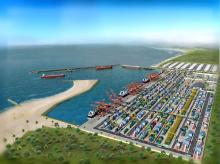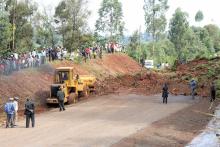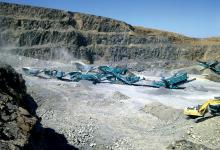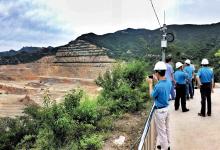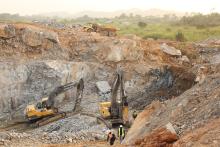Chinese and Indian mining companies such as SMB, TBEA, China Aluminum, Henan International Cooperation Group and Zibo Rundi Aluminum are increasingly investing in bauxite extraction in Guinea. In a special report, ARI assesses why the bauxite market in Guinea is so promising.
Known as the "geological miracle", Guinea is named after its rich mineral resources. The reserves of bauxite in this region are estimated to exceed 40 billion tonnes, accounting for two-thirds of the world's total reserves. The west African country’s iron ore reserves exceed 30 billion tonnes, its gold reserves are estimated at 1,000 tonnes and its diamond reserves are 300 million carats.
In fact, Guinea is the world's largest bauxite resource country. Bauxite is Guinea's most important mineral resource and a major source of foreign exchange earnings. Nowadays, Guinea has become the second largest producer of bauxite in the world after Australia.
In 2018, the Australian AMCG Mining Company acquired a bauxite mining right in Gaoual Province in the Bokai Region in Guinea. The project plans to go into production at the end of 2020, just after India's Ashapura Mining Company starts its own nearby Guinea Bauxite Project in July 2019.
Established in 1960, Ashapura Mining is a leading company in the field of ore production. The company's main business including bauxite, bentonite and kaolin. The company is one of the top five bentonite producers in the world and a global leader in bauxite exports.
This company has mining and ore processing plants in India, Belgium, Nigeria, Oman, and Malaysia. In China, it has cooperated with a number of Chinese alumina companies and sets up representative offices in Beijing.
It is reported that the leading mine for this project will be in the Fugu area of Guinea, with proven reserves of about 90 million tonnes. The company plans to produce bauxite about 5 million tonnes this year, and its bauxite mining capacity is 7 million tonnes per year.
The mine to be exploited and put into operation is located in the HOUDA bauxite block in the Bokai region of Guinea. According to a recent feasibility study report, it has reserves of 326 million tonnes, and the average alumina content is 46%.
Bauxite is widely distributed and is often buried very close to the surface. It is easily mined. As its name suggests, bauxite clinker is a clinker for processing bauxite. It is often referred to as a high alumina material. Bauxite or bauxite clinker can be used to make a variety of high alumina bricks, which are widely used refractory materials and anticorrosive materials in the metallurgical industry and other industries … especially used for electric furnace roofs, blast furnaces and hot air furnaces. The performance of high alumina bricks is superior to that of ordinary clay refractory bricks.
According to the feasibility study report and the project implementation plan, Ashapula Mining plans to invest US $185 million to build a 120-kilometer road junction to the seaside port. After the production of the mine, in the first two years, it plans to produce 5 million tonnes of bauxite annually. From the third year onwards, the annual output will be increased to 10 million tonnes for 35 years.
High-quality grinding and crushing equipment is essential on big projects like these. Powder production lines are also planned, relying on equipment like the HXJQ crushing range from Chinese manufacturer HXCrusher. For more information on these machines, go to: www.hxcrusher.com
